July gardening jobs: keep your garden healthy in peak summer
These July gardening jobs will make sure your plot stays looking great during the warmer weather
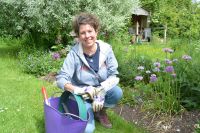

When contemplating July gardening jobs it helps to remember that by this time of year most of the garden will be ticking over quite nicely, growing well by itself.
While this gives you the freedom to spend more time relaxing outside, this doesn’t mean you can completely ignore all the activity in your beds and borders, pots and baskets.
You may be going on vacation, in which in which case one of your jobs in the monthly gardening calendar is to prepare your plot before you go so it doesn’t look like a complete overgrown mess full of dead flowers on your return.
Many houseplants can also enjoy a holiday of their own by being moved into the garden for a few warm weeks to make the most of increased light and occasional showers of rain.
Our 10 essential July gardening jobs for the month ahead
It goes without saying that you need to stay on top of watering and weeding throughout the month. In hot weather, watering plants may be a daily task – especially for those growing in baskets and containers.
These are the other July gardening jobs that will keep your plot looking its best throughout the month.
1. Take care of houseplants (indoors and out)
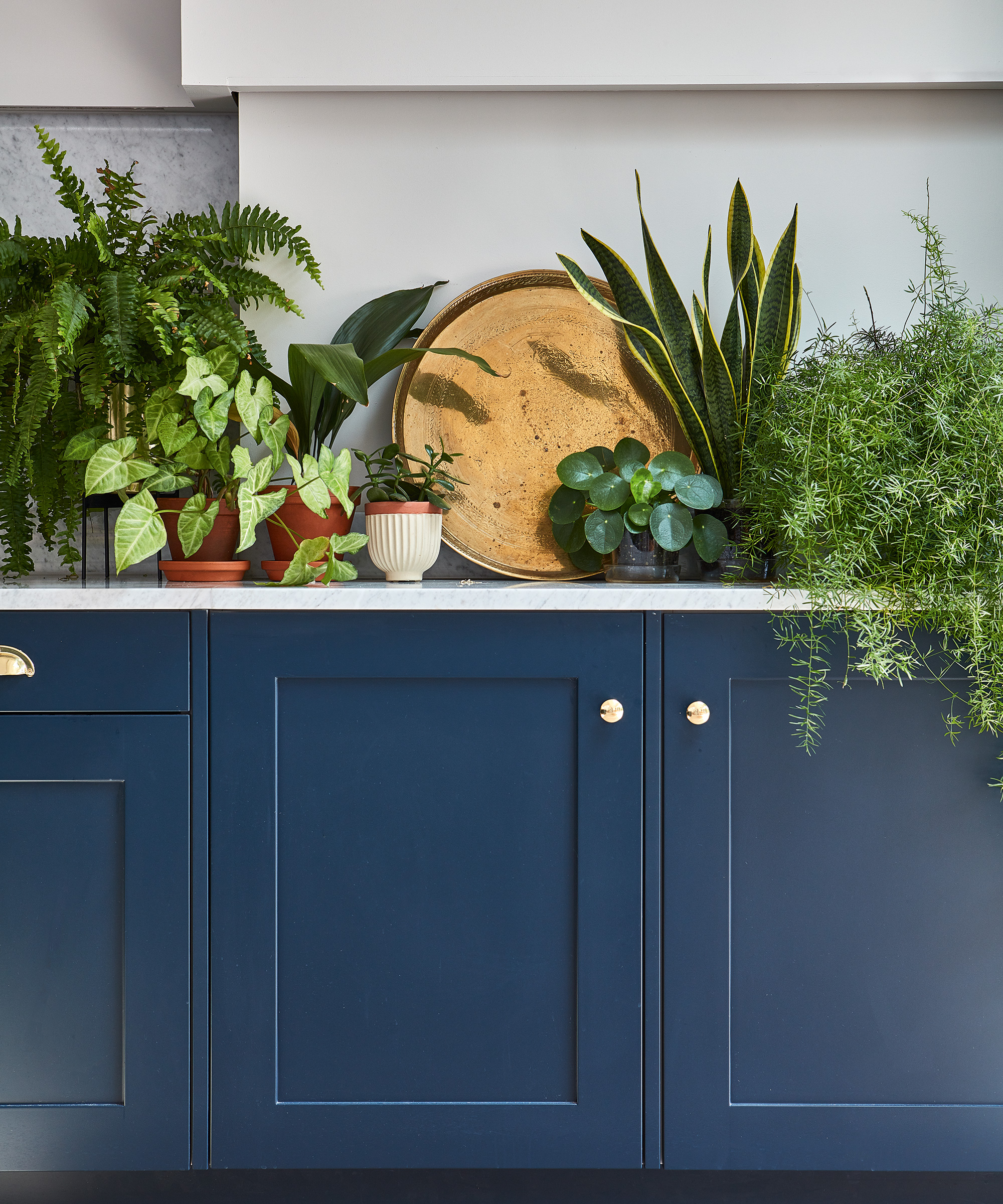
Houseplants continue to grow in popularity and the best indoor plants can still be hard to come by, such is their popularity.
They are often seen as the delicate, cosseted cousins of outdoor varieties, but as many of them hail from warm, temperate zones they will thrive outdoors in warmer summer weather in many areas.
Gentle rain washes accumulated dust and debris from their leaves and keeps their roots hydrated. Higher light levels and natural warmth stimulates healthy growth and summer breezes give plants something to push against, strengthening them.
Aeoniums, anthuriums, Begonia rex, calathea, conservatory citrus plants, sansevieria and many others can all go outside now.
Stand them somewhere warm and sheltered and out of direct sunlight. I like to give mine a gentle hose down with a sprinkler attachment to start with, to clean all the dust and debris off their leaves. Fertilizing plants throughout summer with a general purpose fertilizer and keeping them hydrated with rainwater will do them the world of good.
However, tender orchids that need specific care, African violet and streptocarpus are best left as part of your indoor garden ideas all year round, and it may not be practical to move larger plants to a summer location either.
Top tip: Plants that stay inside need regular feeding and watering and you need to keep an eye out for pests flying in through open doors and windows.
2. Prepare the garden for your vacation
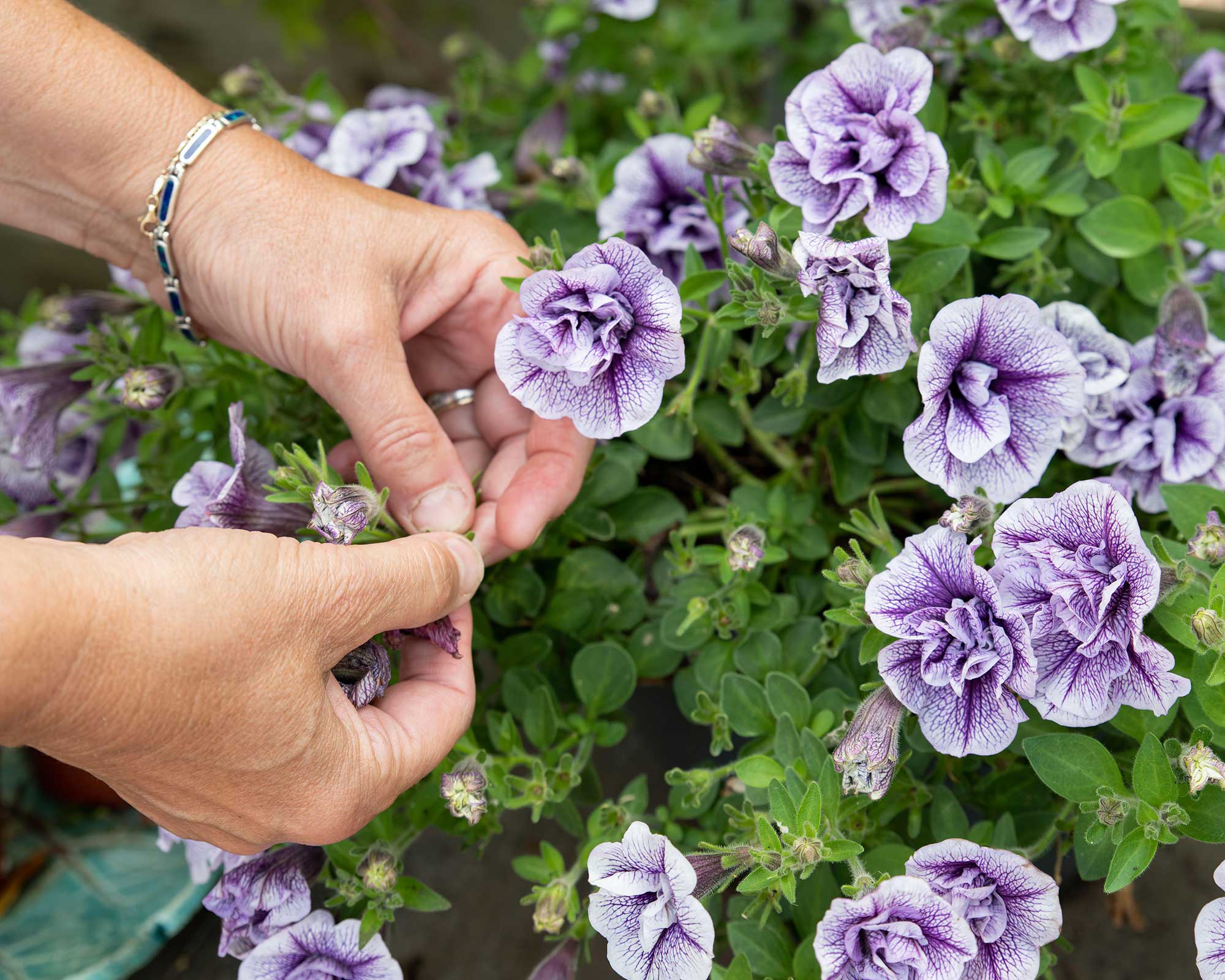
There’s always a lot to do before going on holiday, but in the rush to pack your suitcases and check your travel documents, don’t forget to make sure your garden is in good shape before you go.
Deadheading flowers and weeding are obvious tasks, as is mowing the lawn and making sure the pond is topped up with rainwater.
Preventing plants dehydrating and wilting is another important task, so if you are worried about watering plants while away, work out what plants to prioritize and find ways of making water last longer in your absence. Investing in one of the best self-watering systems is a smart move.

Give anything growing in the greenhouse a good feed and water and leave the door ajar and window open so plants are well ventilated and less likely to overheat.
A couple of bowls filled with water will also help reduce temperatures and raise humidity, keeping the atmosphere healthy and offer a solution if you are worried about how to get rid of spider mites, those devastating sap-sucking pests that hate 'getting their feet wet'.
Harvest any ripe crops and store them appropriately, and also make sure your container gardening ideas are well watered and fed and placed somewhere sheltered so they are less likely to dry out. Help container plants stay fed and hydrated during your absence by using bottle drippers filled with water and liquid tomato feed.
Give everywhere a good weed before you go, to keep your plants healthy and ensure borders look reasonably tidy on your return.
Top tip: Invest in a timed watering system for when you go away. They are widely available, easy to use and most can be operated by a smartphone app, giving you peace of mind when you are reclining on your sunbed at home or abroad.
3. Look after your roses
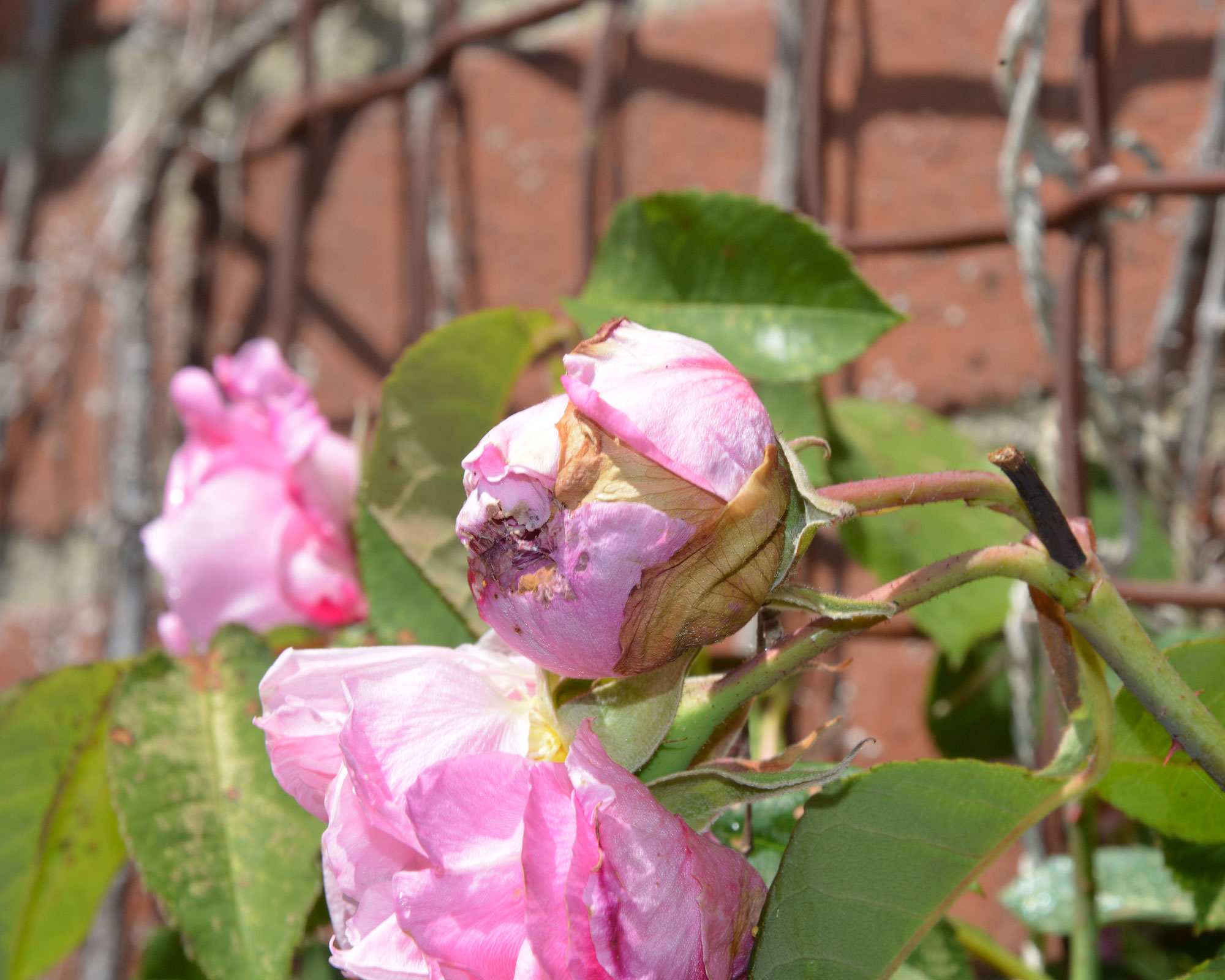
If you've been following a good care routine, your roses should be at their peak now, and if you have been deadheading regularly they will be carrying plenty of buds for their second flowering.
However, because we’ve had rather temperamental weather so far this summer, with plenty of rain and humidity, you may find that some of the flowers have failed to open. Instead they’ve stayed as tightly furled buds, some of which may have been attacked by grey mold.
This is a phenomenon called flower balling and it happens when buds are dampened by rain, which glues the outer petals together, sealing them shut.
Try to remove affected buds before they attract grey mold, then cut away any weeds and other vegetation that is blocking light and air to your rose.
Top tip: A top rose care tip is to feed roses after their initial burst of flowers and they should keep blooming well into the fall.
4. Maintain your pots and baskets

I am sure many of us planted summer containers and hanging baskets with summer bedding plants a few weeks ago, and now the first flush of growth is done, it's time to start a regular regime of care as part of your July gardening jobs.
Following our top care tips for summer containers will keep yours looking great well into the autumn, and remember that feeding, watering, deadheading and checking for pests are all needed between now and then, when annual bedding is usually composted and perennials potted up and moved undercover for winter.

Proprietary compost formulated for baskets and containers usually comes with several weeks of fertilizer already added, along with compounds that control the release of water so that plants get a steady amount and we don't have to water so often.
But by now a lot of the fertilizer will have been taken up by the plants and need replenishing, and we are in the driest part of summer so watering will become a regular thing – sometimes daily during prolonged dry spells.
Here's what else you should consider adding to your container to-do list:
- Around six weeks after flowering, start feeding container and basket plants fortnightly with a solution of tomato feed such as Tomorite (available from Amazon).
- Treat pots with vine weevil nematodes (available from Amazon) if plants start to look sickly. They are widely available online and from garden centres.
- Deadhead regularly to keep blooms coming. You may want to use snips for sticky-sapped petunias.
- Pot plants are easy targets for slugs so learn how to get rid of slugs with a natural deterrent, which will keep the pests in the food chain for their predators.
Top tip: Peat-free compost often looks dry on the surface but may be still well hydrated lower down. Check the amount of water available to your plants by inserting a finger to the first knuckle. Water if it feels dry.
5. Cut back and dry lavender stalks
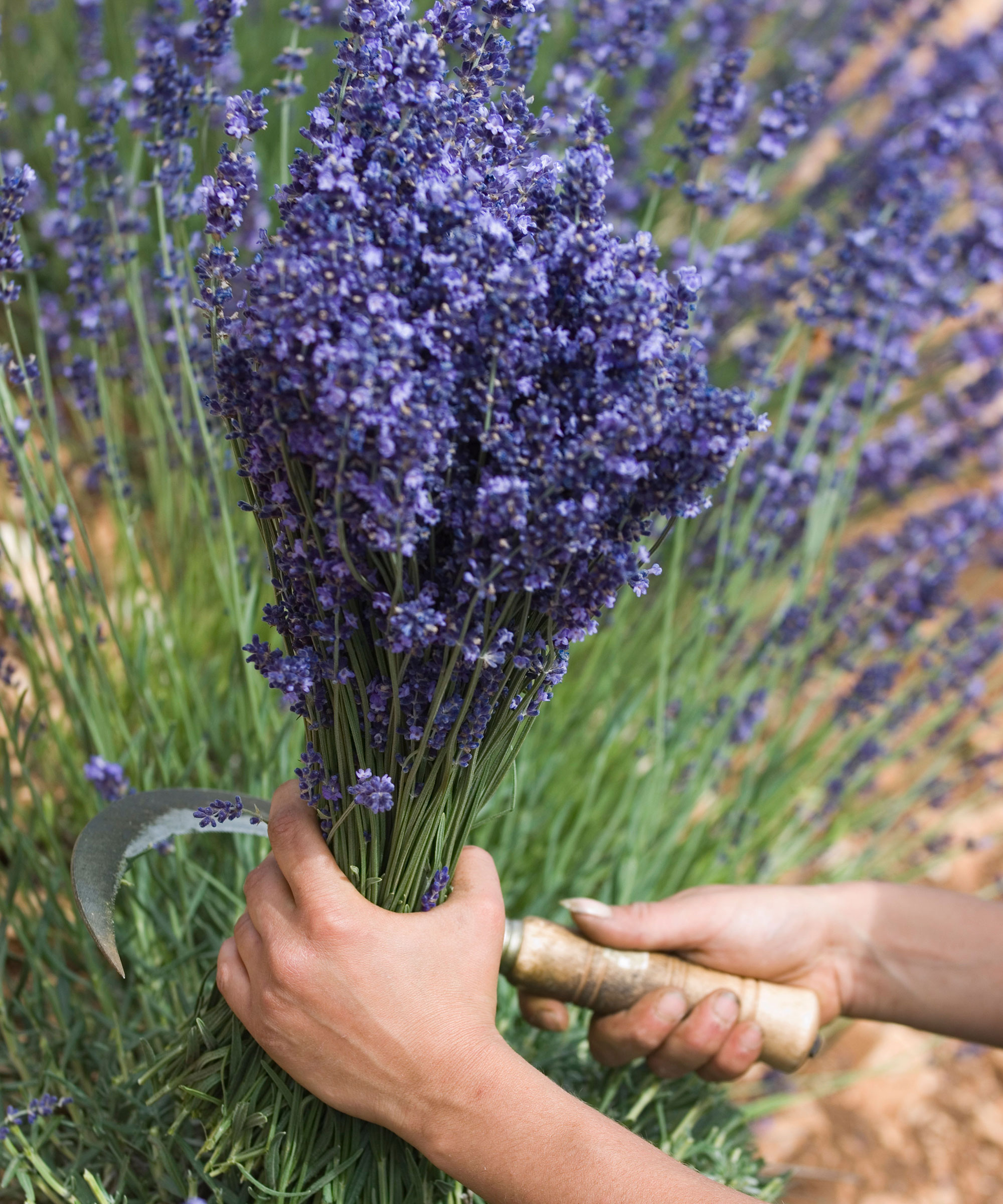
Early summer is lavender season and now it’s just past its peak it can be cut back.
If you are wondering how to prune lavender, the main aim is to shorten the spent flower stems, cutting back to a healthy pair of leaves on around one-third of the plant.
In spring, when they start to grow again, cut the other two-thirds back; follow this pattern each year and you will keep your plants looking neat and orderly.
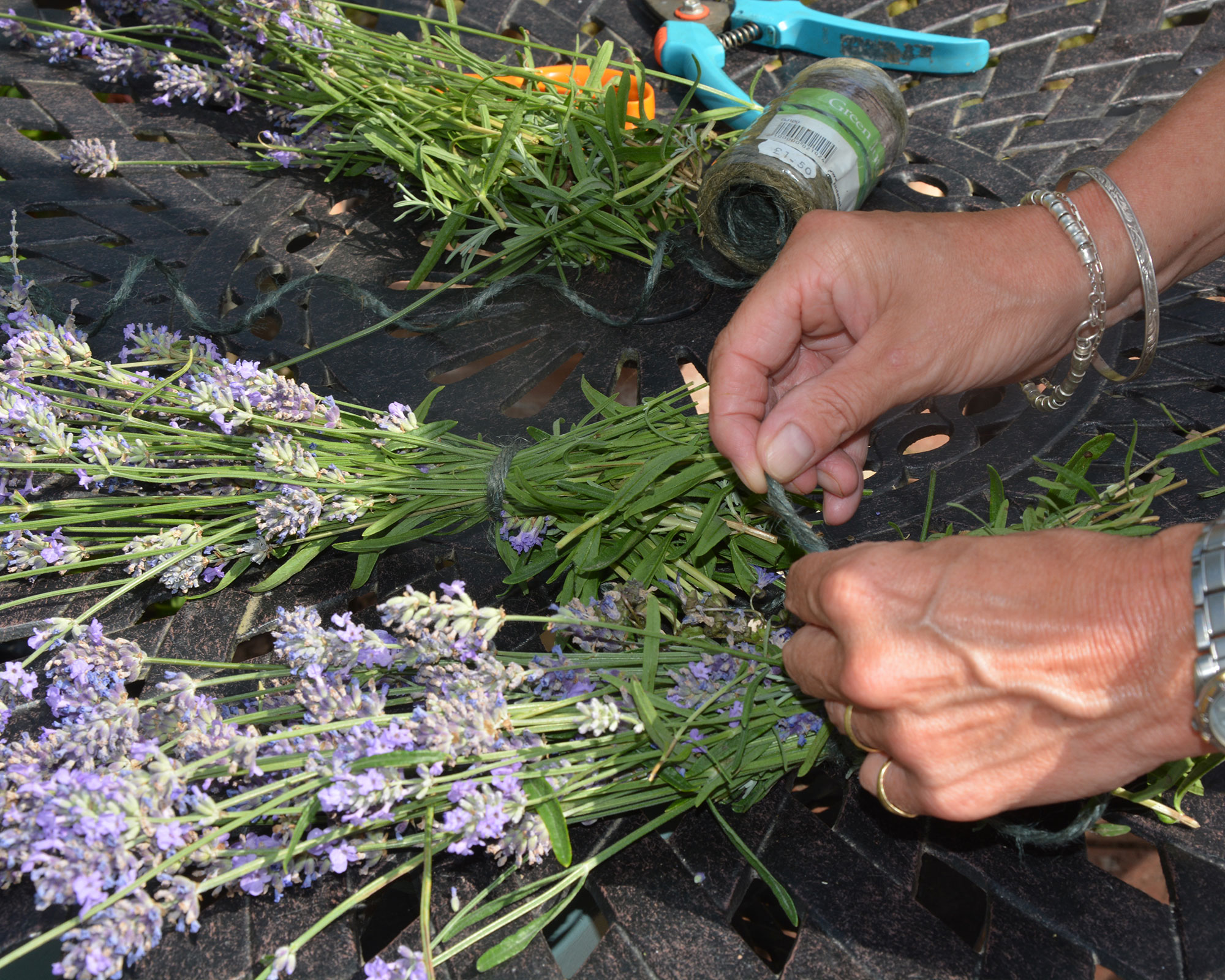
Although lavender is at its most pungent when it is first in bloom, it retains its scent all summer and can still be cut now for pot pourri and lavender bags, which are a useful way of keeping moths away from your precious clothes.
To do this, grasp a handful of stems and cut through using a sharp knife, secateurs or scissors. Avoid cutting into old wood. Tie the flowers in bunches and hang them somewhere airy, cool and out of direct sunlight. Hang a paper bag or old pillowcase underneath them to catch any falling flowers as they dry.
Top tip: Avoid cutting into the older, woody part of the stems as they rarely grow back and you will be left with unattractive stumps. If this happens, you may be better off taking cuttings from the plant or buying replacement plants.
6. Get more perennials for free

Midsummer is the perfect time for taking cuttings from plants such as tender perennials including pelargoniums, penstemons and fuchsias.
Not only do they act as an 'insurance policy' against plants dying in winter, they give you free plants to choose from next year when you are playing around with flower bed ideas or wondering what to include in your summer container ideas.
Take cuttings now and they will have time to grow large enough to be moved into their own pots before the colder weather arrives.
Softwood cuttings are taken from this season’s growth and should root quickly. Keep them in the greenhouse or cool room indoors and they will be ready to move outdoors next year after the frosts have finished.
Top tip: If your cuttings grow well, you may need to move them into larger pots before the fall.
7. Trim back hardy geraniums

A couple of months after the Chelsea chop, it is time for what I call the ‘Hampton hack-back’, an early summer trim for some other bushy perennials that have finished their first flush of flowers.
Hardy geraniums, which flower after catmint, are prime candidates for cutting back now. If left unattended, they can grow weak and out of shape, but if given a brisk trim now they will remain in an attractive mound and hopefully be encouraged to flower again in a few weeks’ time.
It is one of the quickest and simplest July gardening jobs, just take your garden shears and run them over the plants, removing spent flowers and any leaves that are looking past their best.
Top tip: You can also get a second flowering from perennials such as lupins and delphiniums if you cut them back when they start to fade. Then feed and keep the plants well-watered and they may start to bud again.
8. Divide Siberian irises when flowers fade
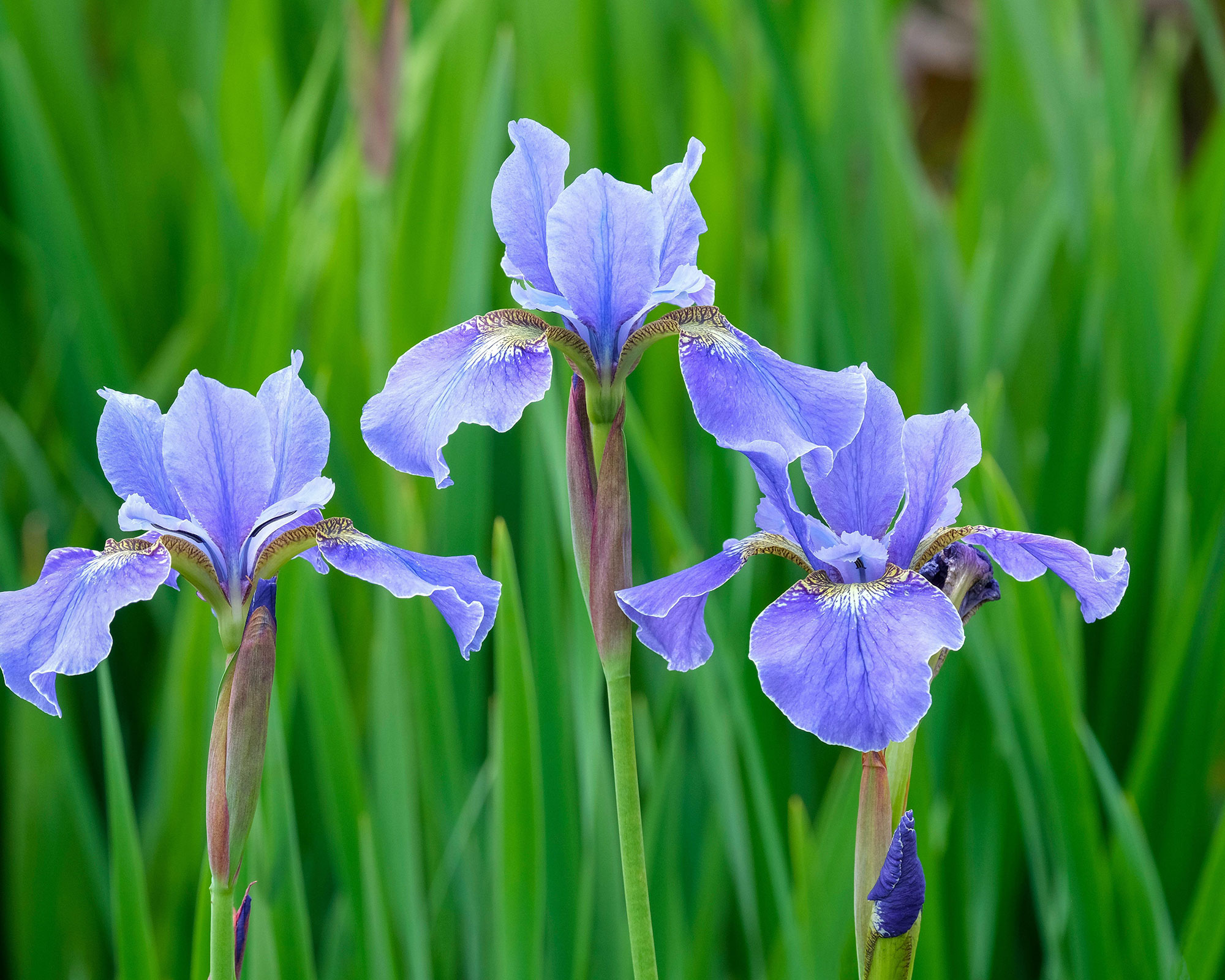
Siberian irises are smaller and less flouncy, but no less attractive, than their cousin, the bearded iris.
Their delicate flowers and slim blade-like leaves add color to the garden in late spring and early summer. If grown in the right spot – somewhere with full sun or partial shade in rich, moisture-retentive soil – and they will soon form an attractive clump.
However, these clumps have a tendency to outgrow their spot and develop unsightly bare centres. You can counteract this and keep plants flowering well by dividing the clumps, see below, in early July shortly after they have finished flowering.
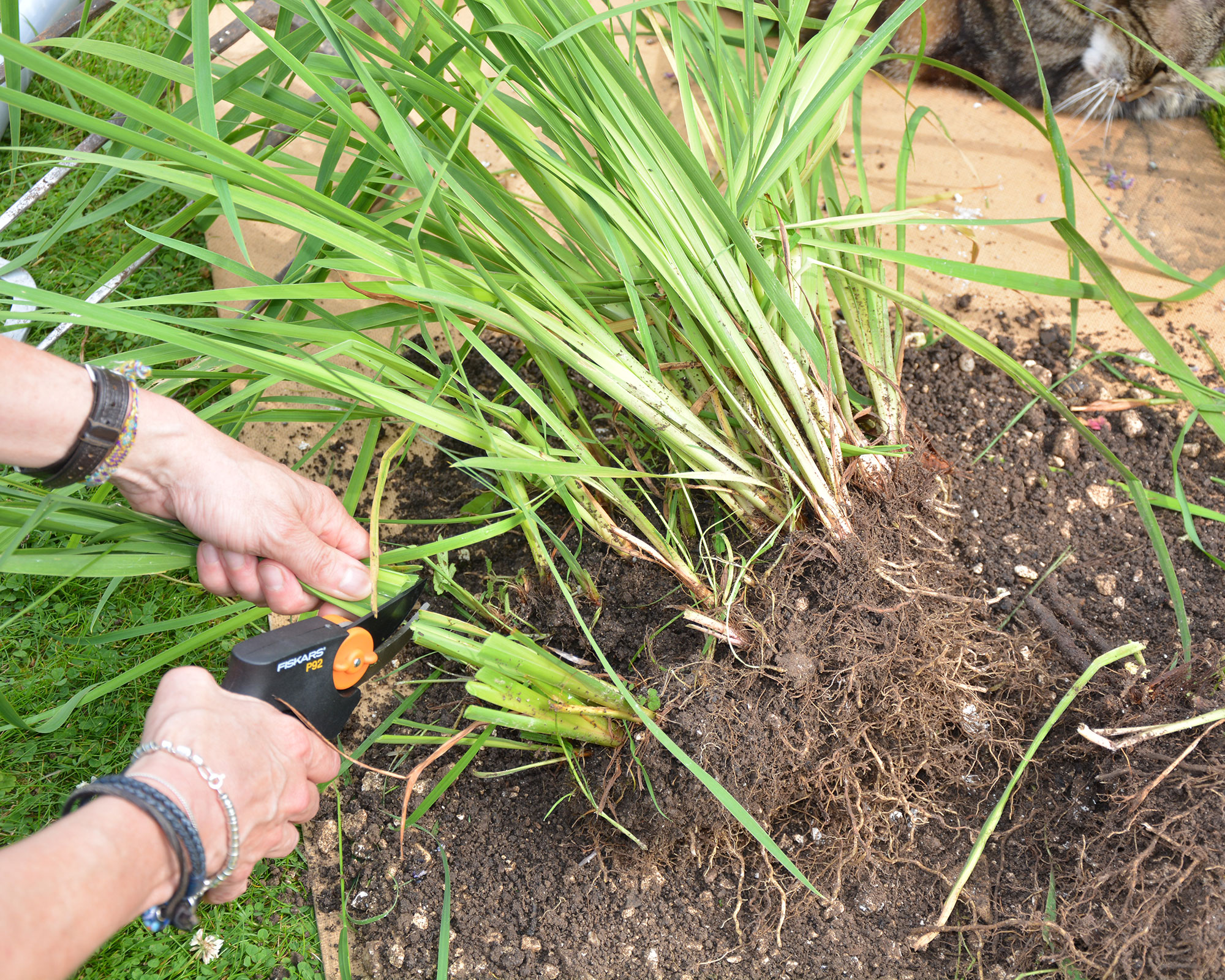
- Dig widely around the iris clump to avoid damaging any roots and rhizomes. Lift with as much soil as possible.
- Place the lifted plant on a tarpaulin or layer of cardboard and divide using two garden forks held back-to-back. Alternatively, cut the iris clump into sections using a sharp garden spade blade.
- Make sure each division has healthy roots and top growth. Cut down the foliage to about 6in (15cm) tall. Reducing the leaves helps prevent wind-rock and moisture loss after re-planting.
- Replant the divisions to the same depth as the parent plant. Water in well and mulch with well-rotted compost or manure.
Top tip: Remove the bulbous seedheads when flowering has finished so the plants direct their energy back into their roots rather than spending it creating seeds.
9. Care for garden birds and wildlife
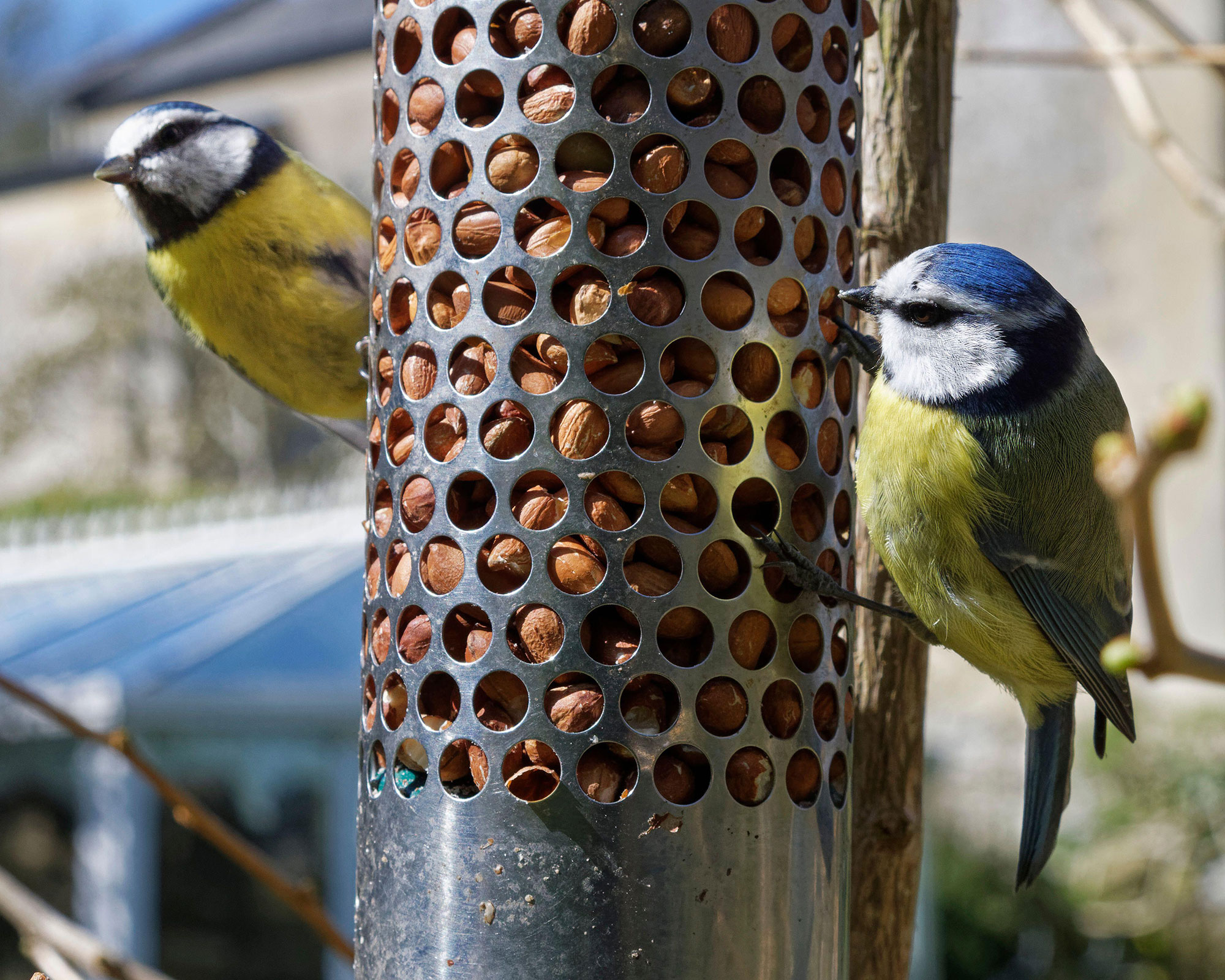
Don’t neglect garden birds and wildlife. Summer may be a time of bounty, but it is also hard work for them, especially if they are raising more than one brood.
Prolonged dry periods can cause a shortfall in available foods, such as insect grubs and seeds, and wet summers can do the same.
Birds also moult in midsummer, which makes them more vulnerable. Leaving food and water in a safe and accessible place means they can forage without the risk of being attacked by predators.
As part of your July gardening jobs, regularly wash bird tables, bird baths and bird feeders to help prevent the spread of disease.
Top tip: Fat balls and suet slabs can turn rancid in hot weather so replace them every few days if not eaten.
10. Start saving seeds for future sowings
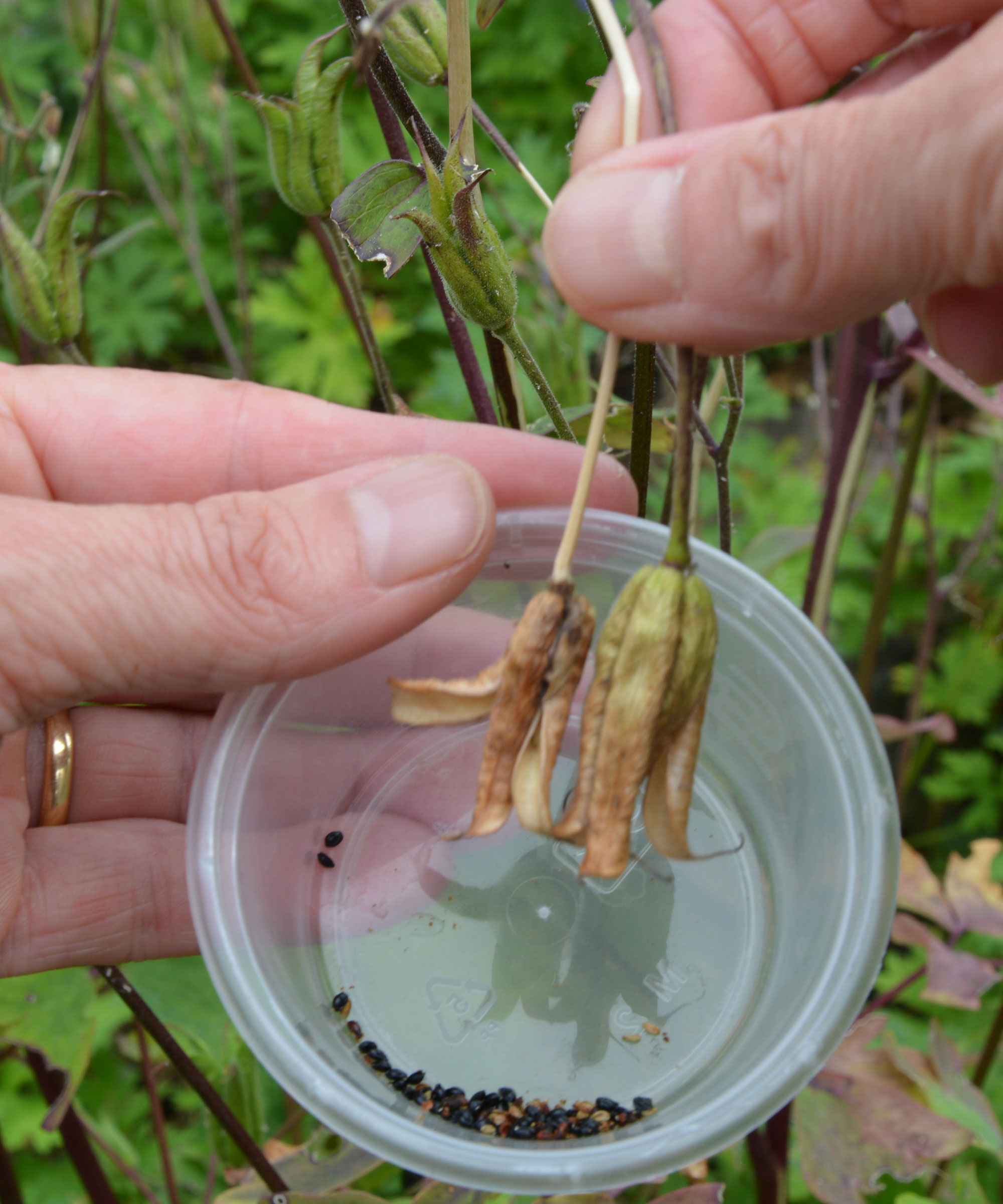
This is the prime season for collecting seeds from flowers, allowing you to propagate your favorite plants where you want them to grow (as opposed to at Mother’s Nature’s whims) and save money at the same time.
Collecting seeds is done when the seed heads or pods have ripened and turned from being flexible or soft and green to dried, brittle and usually brown or red. Gather them on a dry day, ideally after a run of rain-free days, as unless they are completely dry when stored they will go moldy.
One way of collecting is to shake the seeds free from their cases or pods into a container, then remove the debris, or chaff, and seal in a labelled envelope somewhere dark, cool and dry away from pests.
Alternatively, deadhead the seed pods and either shake their contents into an envelope or open them, as with honesty seeds, and remove the seeds to store as above.
Some seeds, such as hellebores, need sowing immediately but most will grow well when stored and dried.
Hardy annuals such as cerinthe, poppies, cornflowers, larkspur and sweet peas can be sown directly into the soil in fall or saved until next spring.
Top tip: Seedheads can ripen fast, literally overnight, so do a daily check of your favorites flowers so you don’t miss out.

Ruth is the gardening editor of Amateur Gardening magazine and spends her working days carrying out, writing about and photographing the tasks the readers should be carrying out each week, as well as testing many of the new products that arrive on the gardening market. She is horticulturally trained, with a qualification from the Royal Horticultural Society.
